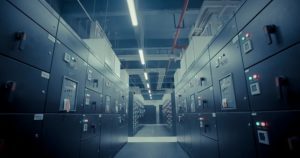An Introduction to Data Center Tiers
 Data center tiers are categorized by the Uptime Institute, which is “the IT industry’s most trusted and adopted global standard for the proper design, build and operation of data centers.” These tiers help to determine the quality and reliability of a data center’s server hosting ability. Labeled as Tiers 1 through 4, the tiers begin with rather simple setups at 1 and become more intricate and reliable at Tier 4.
Data center tiers are categorized by the Uptime Institute, which is “the IT industry’s most trusted and adopted global standard for the proper design, build and operation of data centers.” These tiers help to determine the quality and reliability of a data center’s server hosting ability. Labeled as Tiers 1 through 4, the tiers begin with rather simple setups at 1 and become more intricate and reliable at Tier 4.
Although considered a standard in the data center industry, very few data centers actually have official tier certifications from the Uptime Institute. This means that all businesses should be alert when seeking a data center to partner with; some centers may claim Tier 4 status without being certified and possibly not quite within the bounds of this tier’s definition. Below, we’ve outlined basic properties of each of the four data center tiers.
Data Center Tiers Outline
Data centers are divided into the following tiers:
- Tier 1: Data centers falling into this tier are very basic centers. These centers don’t include any type of redundancy and can have 28.8 hours of downtime per year. Data centers in this tier would typically be used only by rather small businesses.
- Tier 2: At the second tier, data centers are designed with limited redundancy, covering power and cooling needs. These centers may see up to 22 hours of downtime in a year.
- Tier 3: Tier 3 data centers are much more reliable than previous tiers, with only 1.6 hours maximum of downtime annually. Data centers falling under this tier are generally utilized by larger businesses that can’t afford downtime for important functions.
- Tier 4: At the top tier, data centers see only minutes of downtime in a year, totaling 26.3 minutes or less. The minimal amount of downtime is ensured with fully redundant systems, comprised of backup generators and other vital pieces of equipment that prevent outages. Tier 4 data centers can continue to operate mission-critical functions even when a main power source is lost.
Data center tiers help to quickly identify standards in the business. Smaller businesses with less urgent needs may find utilizing a Tier 1 or Tier 2 center convenient and a good way to save costs. On the other hand, large corporations or businesses with extremely important needs may require as little downtime as possible and find Tier 3 or 4 centers to best meet their needs.

